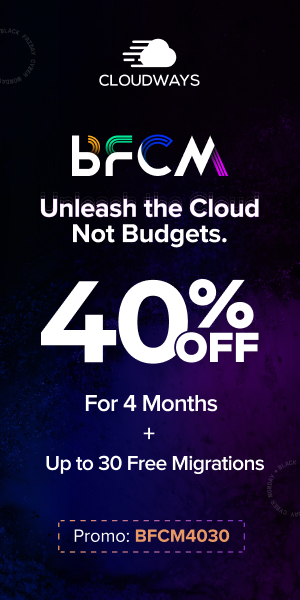If you’re getting started with a development project in England, you’ve probably heard about the need to complete a Biodiversity Net Gain (BNG) assessment. And that might lead you straight to the biodiversity metric sheet.
The good news? It’s not as complicated as it sounds. Once you understand the basics, filling it out can be a straightforward part of your planning process.
So, if you’ve been wondering how to approach the biodiversity metric sheet like a pro, this article is for you. Whether you’re working on a small site or a larger development, this guide will help you complete the metric confidently and correctly.
What is the Biodiversity Metric Sheet?
Before jumping into how to fill it out, it helps to know what the metric sheet is. In simple terms, the Biodiversity Metric Sheet is a tool developed by Natural England and DEFRA to measure biodiversity before and after development. It turns habitats into something measurable, called biodiversity units, which you can use to show how your project will achieve at least a 10% net gain in biodiversity.
There are two main types of metric sheets you might use:
- The Statutory Biodiversity Metric (for major developments)
- The Small Sites Metric (SSM) (for smaller developments)
Who Needs to Use the Metric Sheet?
The biodiversity metric sheet is relevant for:
- Developers preparing a Biodiversity Gain Plan
- Landowners offering biodiversity units
- Local Planning Authorities reviewing planning applications
Understanding the Basics of the Metric Sheet
The metric sheet helps you assess:
- What’s currently on the site (your baseline habitat)
- What will change as a result of the development?
- Howdo you restore or create new habitats to meet the BNG requirement
What Information Do You Need Before You Start
To make the process smooth, it’s a good idea to gather the right information before you sit down to complete the sheet. Here’s what you’ll typically need:
- The types of habitats currently on the site
- The size of each habitat area (in square metres or hectares)
- The condition of each habitat (this follows specific criteria)
- Any photographs of habitat areas (helpful for referencing)
- What habitat enhancements or creations are planned post-development
- Whether these plans align with local nature recovery strategies
The sheet is an Excel-based tool, and although it may look technical at first, the layout is user-friendly and colour-coded to guide you. Each section follows a logical path from the existing site conditions to your plans for biodiversity improvements.
Start with the Baseline
You’ll begin by entering the pre-development habitat information. This includes the habitat types, their locations (called habitat parcels), their size, and their condition.
The tool then uses this information to calculate the baseline biodiversity units—a numerical representation of the site’s current ecological value.
Assess the Impacts of the Development
Next, you enter what changes will happen during development. This helps the tool calculate the biodiversity units that will be lost or changed during the project. This part helps determine where you need to improve or add habitat value to meet the BNG goal.
Plan for Biodiversity Net Gain
Now you enter your plans for habitat creation, enhancement, or restoration. This could be anything from creating new grassland areas to enhancing existing hedgerows. The sheet will calculate the new biodiversity units that these changes will generate.
The goal is to show that the biodiversity units after development will be at least 10% higher than before.
Review and Finalise the Sheet
The final section gives you a summary of your site’s total biodiversity units, both before and after development. If the result shows a 10% gain or more, you’re good to go. If it’s not quite there yet, you can revisit your enhancement plans and add more habitat improvements to meet the requirement.
Tips to Make the Process Even Smoother
Working with the metric sheet becomes a lot easier when you follow a few simple tips. These can help save time and ensure your plan is both accurate and complete.
- Use recent and clear site surveys to collect habitat data
- Label habitat parcels clearly, especially when using maps or photos
- Follow the user guide for the metric sheet to understand habitat condition scoring
- For small sites, take advantage of digital tools that automate parts of the sheet
- Double-check that your proposed habitats are sustainable over the long term
Submitting the Metric Sheet as Part of Your BNG Plan
Once the metric sheet is completed, it becomes a core part of your Biodiversity Gain Plan, which is submitted to your Local Planning Authority (LPA). Along with the sheet, you’ll also submit:
- A habitat plan (map of existing and proposed habitats)
- Supporting statements about how your plan achieves the required gain
- Any relevant photos or local strategy alignments
If you’re unsure how this all comes together, it’s helpful to explore a detailed overview of the entire bng assessment, which walks you through what’s expected and how to confidently prepare each part of your submission. This gives you a full picture of the process and how the metric sheet fits into the broader compliance journey.
The LPA will then review the information to confirm that the BNG goal is met and that your application aligns with statutory requirements.
Why It’s Worth Getting It Right
Completing the biodiversity metric sheet isn’t just about meeting a planning requirement. It’s also a chance to improve your site in a way that supports long-term environmental value. By restoring or enhancing habitats, you’re contributing to healthier ecosystems and creating better places for wildlife and people alike.
When done well, the metric sheet helps you demonstrate the positive impact of your development. It also opens doors for future projects by building a strong track record of responsible land use.
Final Thoughts
Filling out the biodiversity metric sheet can seem a bit technical at first, but with the right approach, it becomes a valuable part of your planning journey. The key is to see it not just as a form to complete but as a helpful guide to make your development more sustainable and future-ready.













Leave a Reply